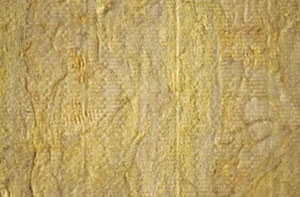Acoustic Mineral Wool
Acoustic and Soundproofing Services
Acoustic mineral wool, often referred to as mineral fibre insulation or simply mineral wool, is a remarkable building material that plays a pivotal role in soundproofing and thermal insulation applications. Comprised primarily of natural rock materials such as basalt, diabase, or slag, acoustic mineral wool is created through a manufacturing process involving melting and spinning these raw materials into fine fibres. These fibres are then bonded together using heat and pressure, resulting in a dense, versatile, and highly effective insulation product.
In this comprehensive exploration, we'll delve into the properties, benefits, applications, and considerations surrounding acoustic mineral wool.
Properties of Acoustic Mineral Wool
-
Sound Absorption: One of the standout characteristics of acoustic mineral wool is its exceptional sound-absorbing ability. It excels in mitigating sound by absorbing and dissipating acoustic energy, thus reducing noise transmission. This property makes it indispensable in scenarios where maintaining acoustic comfort is paramount, such as residential buildings, commercial spaces, educational institutions, theaters, recording studios, and more. When installed within walls, ceilings, or floors, it can significantly improve the acoustic environment by minimizing the intrusion of external noise and preventing sound leakage between rooms.
-
Thermal Insulation: Beyond its prowess in soundproofing, acoustic mineral wool also boasts impressive thermal insulation properties. It helps regulate indoor temperatures by reducing heat transfer between spaces. This thermal insulating ability aids in conserving energy and lowering heating and cooling costs, making it a valuable asset in constructing energy-efficient buildings.
-
Fire Resistance: Acoustic mineral wool is inherently fire-resistant and non-combustible. This property ensures that it can withstand high temperatures without catching fire or emitting toxic fumes. Consequently, it contributes to fire safety measures within buildings, enhancing the overall safety of occupants.
-
Moisture Resistance: Acoustic mineral wool is resistant to moisture, preventing the growth of mold and mildew. This resistance is particularly advantageous in areas prone to humidity, such as basements or bathrooms, where maintaining a dry and healthy indoor environment is critical.
-
Pest Resistance: Another advantage of acoustic mineral wool is its resistance to pests and vermin. This characteristic safeguards against infestations and damage, ensuring the longevity and performance of the insulation.
Applications of Acoustic Mineral Wool
1. Soundproofing:
Acoustic mineral wool is extensively employed in soundproofing applications due to its superior sound-absorbing qualities. It is used in various building components, including:
-
Walls: Installing acoustic mineral wool within wall cavities helps reduce sound transmission between rooms. This is particularly valuable in apartments, hotels, offices, and multifamily residences where noise isolation is crucial for occupant comfort.
-
Ceilings: Suspended acoustic panels or ceiling tiles made from mineral wool can effectively absorb sound and reduce noise levels in spaces like conference rooms, auditoriums, and restaurants.
-
Floors: When placed beneath flooring materials, acoustic mineral wool minimizes impact noise, making it a popular choice for soundproofing in multi-story buildings and residential complexes.
2. Thermal Insulation:
Acoustic mineral wool's thermal insulating properties make it a versatile choice for enhancing energy efficiency in buildings. It is used in:
-
Walls: Insulating wall cavities with acoustic mineral wool helps maintain stable indoor temperatures and reduces heat loss, resulting in lower energy consumption and utility bills.
-
Roofs: Installing mineral wool insulation in attics and roof spaces assists in regulating the temperature of the living space below, preventing excessive heat gain in summer and heat loss in winter.
-
Floors: Subfloor insulation using acoustic mineral wool contributes to energy efficiency by preventing heat from escaping through the floor.
3. Fire Protection:
Due to its non-combustible nature, acoustic mineral wool is employed in fire-resistant assemblies to enhance the safety of buildings. Applications include:
-
Fire Barriers: Mineral wool boards or batts are used to create fire-resistant barriers in wall and ceiling assemblies, providing crucial protection against the spread of flames and smoke.
-
Fire Doors: Mineral wool insulation is often integrated into fire-rated doors, enhancing their fire resistance and containment capabilities.
-
Ductwork Insulation: In HVAC systems, mineral wool insulation is utilized to insulate ducts, adding fire protection and preventing the spread of fire through ductwork.
4. Moisture Control:
In areas where moisture control is essential, acoustic mineral wool is employed to mitigate the risk of mold growth and structural damage. Key applications include:
-
Basements: Mineral wool insulation in basement walls helps maintain a dry and mold-free environment, improving indoor air quality.
-
Bathrooms: Insulating bathroom walls and ceilings with mineral wool inhibits moisture infiltration, reducing the likelihood of mold and mildew formation.
5. Industrial Applications:
Beyond building construction, acoustic mineral wool finds utility in various industrial applications, including:
-
High-Temperature Insulation: It is used as insulation in industrial equipment, kilns, and furnaces due to its resistance to extreme temperatures.
-
Pipe Insulation: Mineral wool is employed to insulate pipes, providing both thermal and acoustic benefits.
Considerations when Using Acoustic Mineral Wool:
-

Installation: Proper installation is critical to achieving the desired soundproofing and insulation outcomes. Installers should follow manufacturer guidelines and ensure a snug fit without compression, which can diminish performance.
-
Health and Safety: While acoustic mineral wool is generally safe to handle, it's advisable to wear appropriate protective gear, such as gloves and a mask, when working with the material to prevent skin irritation or inhalation of fibres.
-
Compatibility: Ensure that the selected acoustic mineral wool product is compatible with the specific application and meets relevant building codes and standards.
-
Thickness and Density: The thickness and density of mineral wool insulation can vary, so selecting the appropriate product for your project's requirements is crucial to achieving optimal soundproofing and thermal insulation.
-
Vapor Barriers: In some cases, adding a vapor barrier may be necessary to prevent moisture infiltration in areas with high humidity levels.
In conclusion, acoustic mineral wool is a versatile and invaluable building material that excels in soundproofing, thermal insulation, fire protection, moisture control, and industrial applications. Its unique properties make it an essential component in creating comfortable, energy-efficient, and safe environments within buildings and industrial settings. Whether you're looking to enhance acoustic comfort, improve energy efficiency, or bolster fire safety, acoustic mineral wool is a reliable and effective solution with a proven track record in construction and industry.


